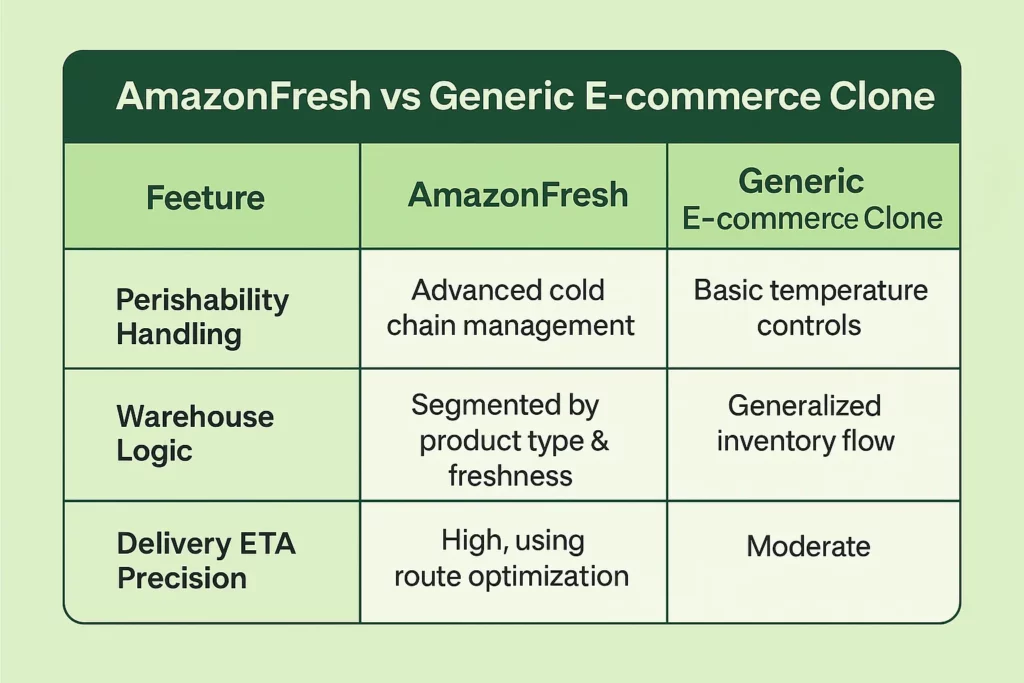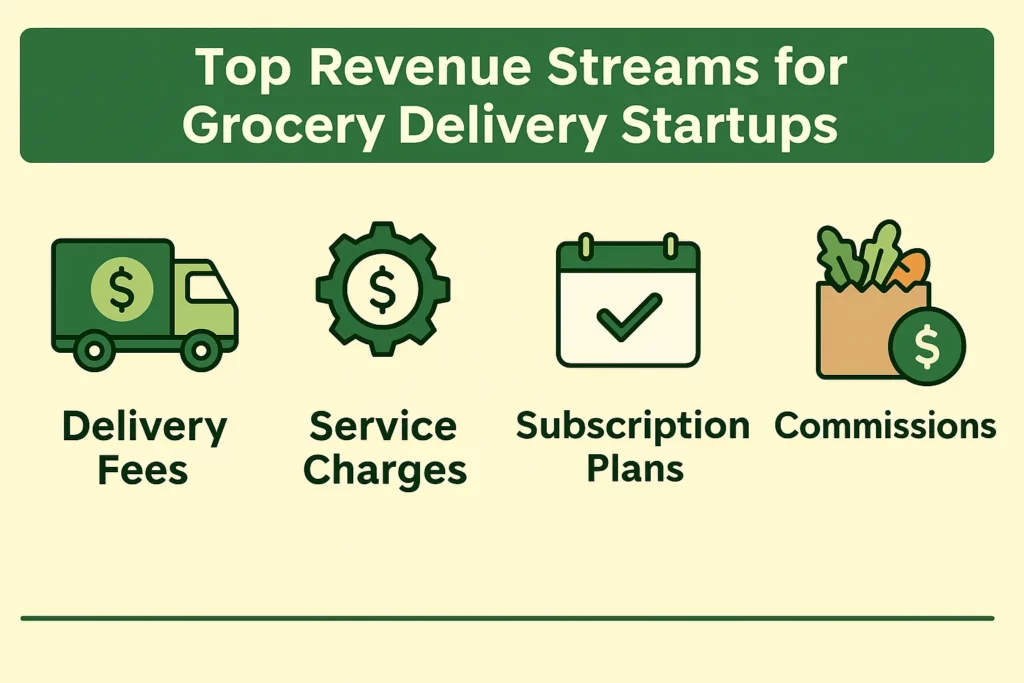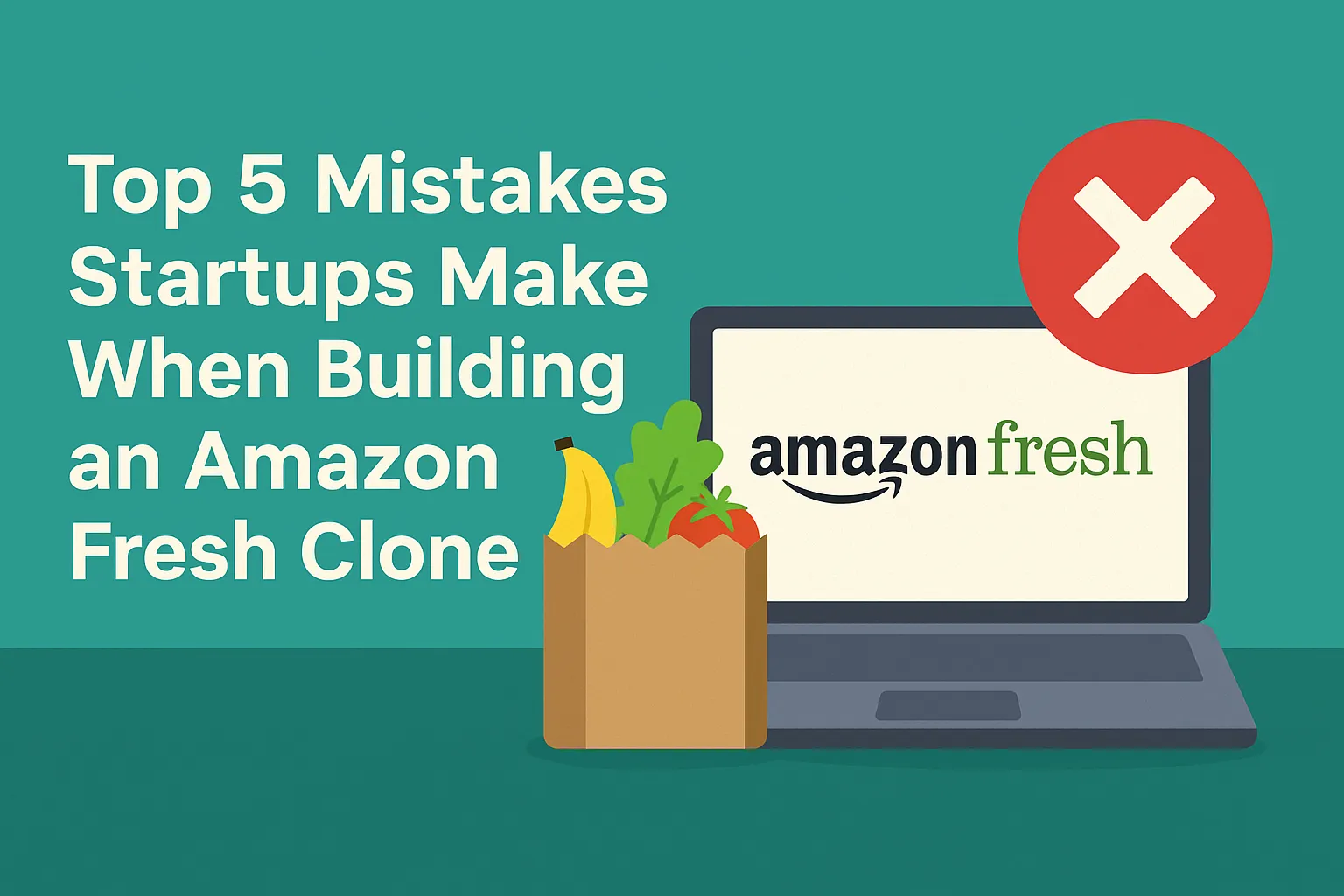You’re thinking of launching your own grocery delivery app, maybe inspired by the success of AmazonFresh. You’ve got a killer logo, your cousin’s friend is designing the app, and you even bought a domain. But let’s hit pause right there. The grocery tech game is not for the faint-hearted—and trying to replicate AmazonFresh is like trying to copy a Michelin-starred dish with an air fryer.
We’re not here to crush dreams, just to prep you for reality. Many startups enter the grocery delivery space with enthusiasm and energy, but quickly get derailed by overlooked details, underestimated logistics, and tech missteps. It’s not just about delivering tomatoes faster—it’s about building a system that thinks like a grocer and executes like Statista’s Amazon.
At Miracuves, we’ve seen this rodeo more than a few times. Let’s break down the top 5 mistakes startups make when building an AmazonFresh clone—and how you can dodge them like a pro.

Mistake 1: Treating Grocery Delivery Like Just Another E-commerce App
Here’s the first trap: thinking your AmazonFresh clone is just a marketplace with a cart and checkout. Nope. Grocery delivery is an entirely different beast. Unlike apparel or electronics, you’re dealing with perishable inventory, temperature-controlled logistics, real-time stock levels, and super tight delivery windows.
AmazonFresh didn’t just tack groceries onto its app; it built a separate system to handle the chaos. If you’re cloning, start with:
- Smart inventory syncing with expiry tracking
- Zone-based delivery prioritization
- Integrated cold storage logistics
Learn More: AmazonFresh Clone App: What It Is & How It Works (Explained)
Mistake 2: Overlooking Local Fulfillment Complexity
Grocery logistics aren’t plug-and-play. Startups often believe partnering with a few vendors or supermarkets is enough. But fulfilling fresh groceries means controlling (or syncing with) micro-fulfillment centers, dark stores, or hyperlocal warehouses.
AmazonFresh works because it owns and operates a network of temperature-controlled facilities. As a startup, consider:
- Partnering with local dark stores
- Deploying predictive fulfillment algorithms
- Using AI to allocate stock based on local demand clusters
Mistake 3: Skimping on Real-Time Inventory Accuracy
You know what’s worse than not getting your favorite yogurt? Seeing it available, ordering it, and then getting a “sorry, out of stock” message.
That experience is a conversion killer.
Startups often rely on manual stock updates or basic API calls to vendors. The fix?
Mistake 4: Designing a One-Size-Fits-All User Experience
AmazonFresh nails regional personalization. Your clone can’t just slap a global UX and call it a day. Grocery habits vary wildly across demographics, locations, and cultures.
Startups often forget:
- Region-specific product curation (e.g., Indian spices in Dubai, organic-only in California)
- Local language toggles & units of measurement (grams vs pounds)
- Time-slot based delivery preferences
Reminder: A/B test your UX with at least 3 audience personas. What works for Gen Z in urban Dubai may annoy boomers in rural Kent.
Mistake 5: Postponing Monetization Strategy Till After Launch
Startups often believe they should first “get users” and “figure out monetization later.” Spoiler: Amazon didn’t.
AmazonFresh’s model includes:
- Monthly subscriptions (Prime Fresh)
- Delivery fees for non-members
- Featured product placements from vendors
- Dynamic pricing based on freshness & margin
Build Your Own AmazonFresh Clone with Miracuves
Bake revenue strategy into your design from day one:
- Add vendor dashboards with ad campaign tools
- Offer bulk deals and private-label upsells
- Reward-based referral programs
Learn More: Pre-launch vs Post-launch Marketing for AmazonFresh Clones

Conclusion
Building an AmazonFresh clone isn’t just a tech play—it’s logistics, psychology, AI, and customer obsession rolled into one. Avoiding these common mistakes can save you millions in rebuilds and help you win trust where it matters most: at the doorstep.
At Miracuves, we help innovators launch high-performance app clones that are fast, scalable, and monetization-ready. Ready to turn your idea into reality? Let’s build together.
FAQ’s
1) Is it legal to build an AmazonFresh clone?
Yes, if you’re creating a unique app that doesn’t infringe on trademarks or patented features. Cloning concept, not content.
2) How much does it cost to develop a grocery delivery app like AmazonFresh?
Building a grocery delivery app like AmazonFresh with all essential features and scalability can cost $2899 with Miracuves.
3) What tech stack should I use for real-time inventory?
Node.js or Laravel backend, Flutter frontend, Firebase or AWS for real-time data syncing.
4) Can I integrate with local supermarkets?
Absolutely. Use vendor APIs or provide them with a lightweight POS bridge.
5) How do I manage perishable goods?
Use expiry-tracking databases, FIFO warehouse logic, and time-slot based delivery to minimize waste.
6) How do I monetize a grocery app?
Combine subscription models, vendor promotions, sponsored listings, and delivery fees. Don’t forget loyalty points.








